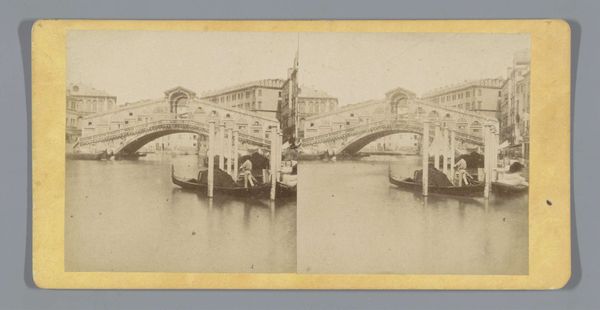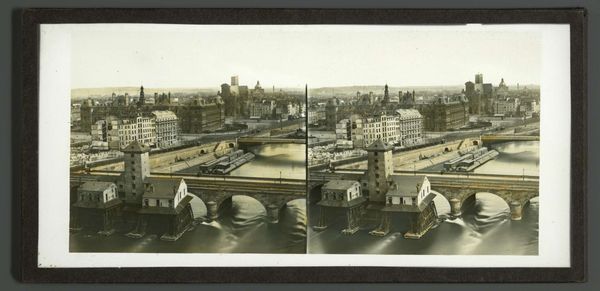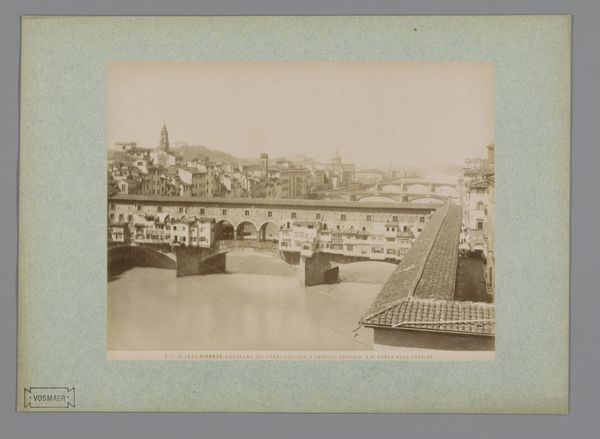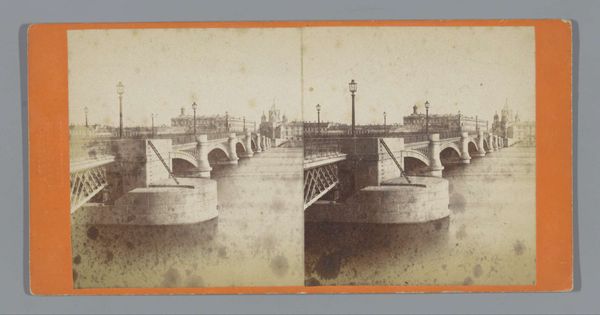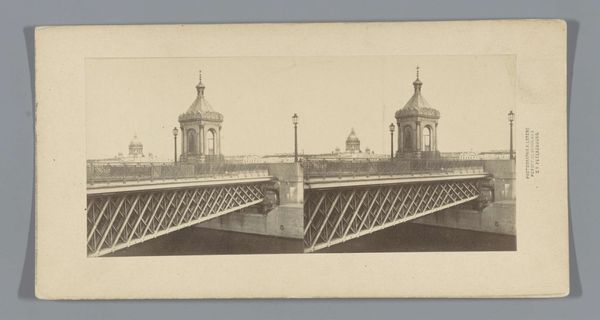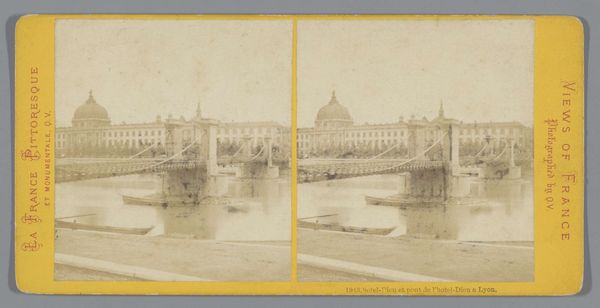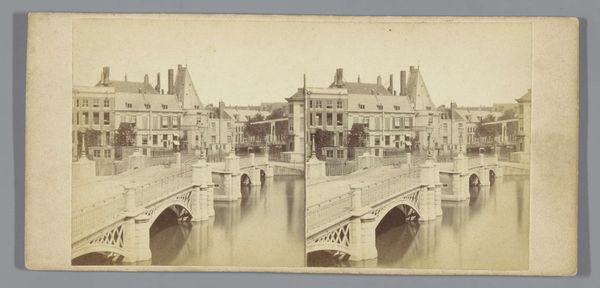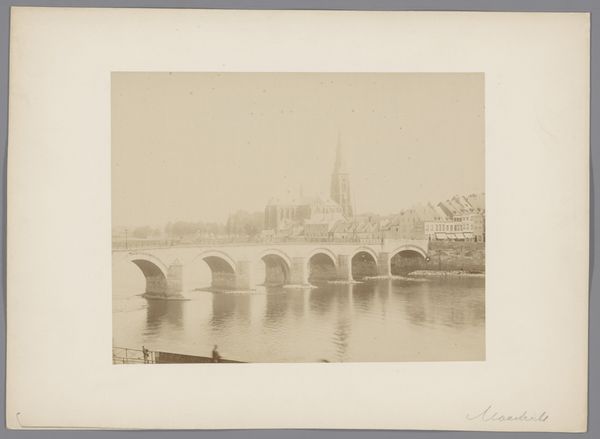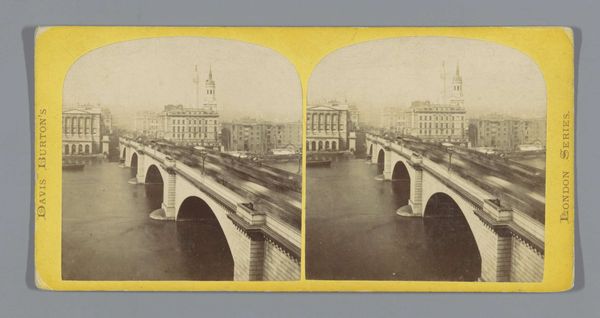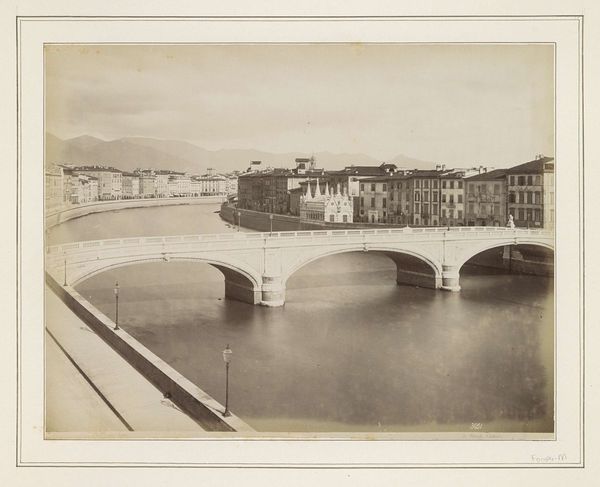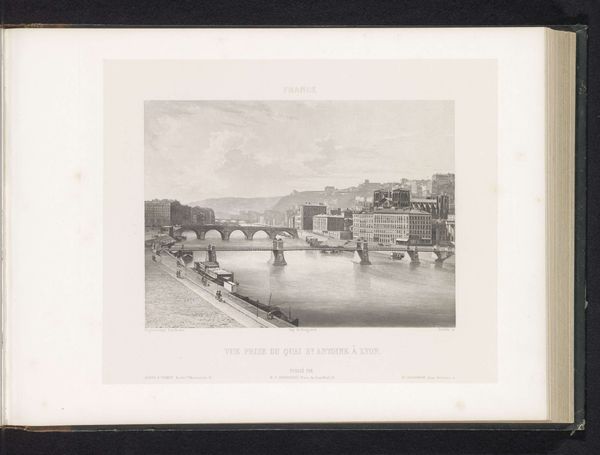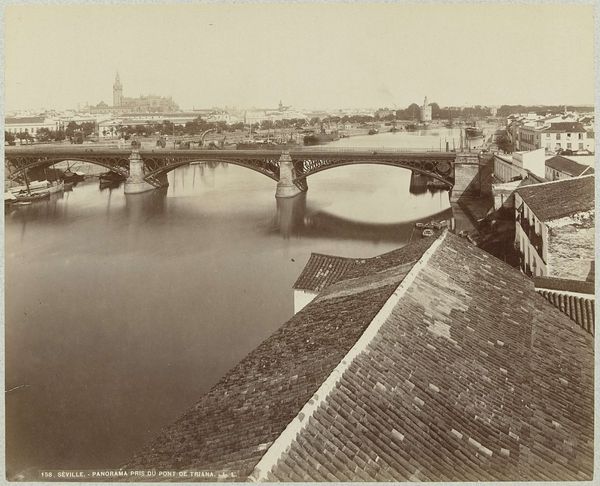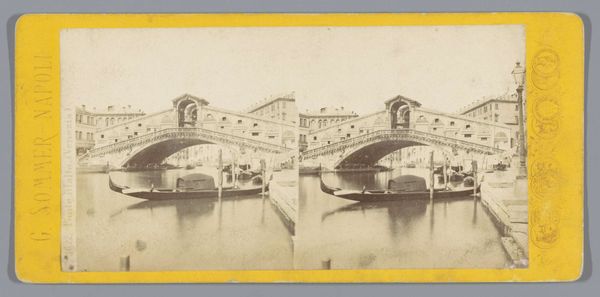
Dimensions: height 85 mm, width 170 mm
Copyright: Rijks Museum: Open Domain
Curator: This gelatin-silver print, titled "Gezicht op de Nicolaasbrug in Sint-Petersburg," was created sometime between 1860 and 1880 by Alfred Lorens. What's your first take on this photographic cityscape? Editor: The quietness strikes me first—a stillness emphasized by the long exposure. The bridge’s reflection creates this symmetrical mirroring effect that doubles the visual weight. It makes me wonder what was happening in the city just beyond the frame. Curator: Absolutely, the mirrored image has an almost dreamlike quality. The bridge, of course, as a structure carries so much symbolism. It visually represents a connection, but perhaps also points to divisions bridged...or not. Editor: Exactly. A bridge literally spans a divide. It is a hopeful symbol suggesting potential overcoming separation but also implying that such a divide already exists. In 19th-century Russia, were bridges sites of political crossings or perhaps sites for those seeking passage out of Russia altogether? Curator: Lorens’ work here can be placed within both the Romanticism and Realism movements. Romanticism for its evocative mood and almost spiritual stillness in nature, Realism for the straight, unidealized recording of what is simply in front of the camera. Do you feel the photographer consciously straddled those approaches? Editor: I see your point, but in this period photography itself could be regarded as revolutionary, providing supposedly "objective" snapshots in ways painting never quite could. Realism as truth and Romanticism as emotional conveyance – that photograph, in its material objecthood, could perhaps claim some power to objectively present both simultaneously. How would this resonate with audiences experiencing significant cultural shifts at this time? Curator: Good point, audiences may have found these novel photographs captivating because of their capacity to be "true-to-life". In this photograph the artist emphasizes an imposing and impressive urban structure, which no doubt represented progress for many. Editor: And now, so many years later, it reminds us that we, too, are standing on our own bridge of sorts, connecting past and future. These quiet bridges remain laden with possibilities—or reminders of those impossibilities. Curator: A fascinating artwork, revealing both the passage of time and how our perceptions of history continually evolve. Thank you for sharing your perspectives.
Comments
No comments
Be the first to comment and join the conversation on the ultimate creative platform.
